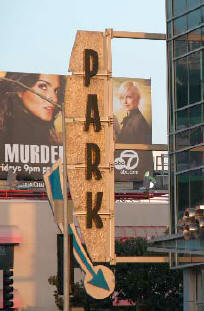July 2008
![]()
AutomatedBuildings.com
[an error occurred while processing this directive]
(Click Message to Learn More)
July 2008 |
[an error occurred while processing this directive] |
|
|
Mike Schell |
The Building
The Sunset Millennium building is in the heart of the renowned,
billboard saturated, Sunset Blvd nucleus of trendy restaurants and exclusive
nightclubs. The lower levels of the building house a 4 story underground parking
garage that can hold up to 1000 vehicles. The garage sees traffic 24 hours a
day, 7 days a week.
|
|
|
|
|
|
|
|
|
|
|
|
|
|
|
|
|
|
|
|
|
[an error occurred while processing this directive] |
Issue
When the building was constructed approximately 20 years ago a carbon
monoxide ventilation control system was installed in the garage to control fans
based on automobile activity. This on/off system had stopped working a number of
years ago. The building operator was frustrated with the system as it seemed to
operate as a black box with absolutely no interface or instructions to
understand, adjust or troubleshoot the system. In its current inoperative state
the 8 large ventilation fans in the building (242 hp) had been set to run
continuously. The new building owner estimated a cost of over $242,000 annually
for over 1.5 million kWh of energy to operate the fans 24 hours a day, 7 days a
week.
 AirTest
Solution
AirTest
Solution
Using the existing conduit left by the non-working CO system, 41
brand new TR2000-Lon LonWorks® CO sensors were installed throughout the garage
so that there was approximately one sensor for every 7,000 square feet. The
system layout and installation was developed by AirTest working with the
building owner and installing contractor. AirTest offers this design service to
all customers.
An AirTest CN8000 LonWorks® control was used to read the 41 sensors and then provide a control signal to control the speed of the fans. A major reason the LonWorks® system was selected for this installation was due to the ease of wiring the sensors together, hence a much lower cost of installing the network. The control also features an easy to use keypad and interface screen that allows:
The user to see the readings on all sensors,
The ability to adjust a number of operating parameters of the ventilation control system and VFD interface.
A message center that reports on troubleshooting and maintenance issues, and indicates alarms and warnings if there is a malfunction.
As part of the project, variable frequency drives (VFDs) were also installed on all fan motors. VFDs offer a number of advantages over the traditional method of turning fans on and off based on CO levels. This includes:
Fan motor and belt life is extended by eliminating the repeated hard start of fans. Instead, the VFDs gradually ramp up fan speed using a soft start.
Operating the fans continuously at a 25% fan speed can save significant energy. The relationship between VFD fan speed and energy is exponential meaning that a VFD operating at 25% speed will consume about 5 to 7% of the energy normally consumed at full speed. The result is better ventilation and energy cost savings in excess of 90%.
VFDs can also significantly reduce electrical demand. Fans are less likely to ramp up to full speed during periods of high automobile activity resulting in reduced demand charges. In the case of Sunset Millennium, the AirTest CN8000 controller will work with the VFDs to reduce the demand for electricity by at least 50% or 90 kW.
A major benefit of running VFDs is the improved environment in the garage. The continuous operation of the fans at 25% speed will ensure that the garage air quality is enhanced and that a reservoir of fresh air will be circulated in the garage to readily absorb and exhaust combustion fumes from periodic automobile activity.
[an error occurred while processing this directive]
Results
Current estimates are that this $160,000 installation will reduce fan
energy usage by 90% and limit demand charges by at least 50%. Simple payback for
the system is expected to be 9 months. However rebates from Southern California
Edison covered 100% of the system cost making the AirTest Garage Ventilation
system cash positive the day it was turned on.
From an energy perspective, the annual energy savings are estimated to be 1.35 million kWh, which in California results in a reduction of greenhouse gas emissions of more than 1.8 million lbs of CO2 annually.
In terms of ongoing maintenance, the calibration of the sensors will have to be checked every 2 years, but with the continuous ventilation provided by the VFD’s, drift of the sensors is expected to be minimal because of the low levels of carbon monoxide that will be seen. After 5 years the plug in sensor element can be replace for a nominal charge while keeping the LonWorks® transmitters in place.
Summary Of Equipment Installed:
41 AirTest TR2000 LonWorks® Communicating CO Sensors
1 AirTest CN8000 Parking Garage Controller (LonWorks® communicating)
8 Variable Frequency Drives (provided by AirTest)
About AirTest
AirTest Technologies Inc. is a Green-Tech company specializing in
sensors that improve commercial building operating efficiency and at the same
time create energy savings opportunities. These sensors are all based on
technical innovations developed in the last ten years and comprise a growing
second wave of energy saving technologies that will make a significant
contribution to the sustainability of buildings. AirTest offers its products to
leading-edge building owners, contractors and energy service companies targeting
the buildings market. AirTest also provides energy cost reduction solutions to
building equipment and controls manufacturers who incorporate AirTest sensor
components in their products. AirTest is a partner member of LonMark®
International, an organization dedicated to supporting open building control
systems.
[an error occurred while processing this directive]
[Click Banner To Learn More]
[Home Page] [The Automator] [About] [Subscribe ] [Contact Us]